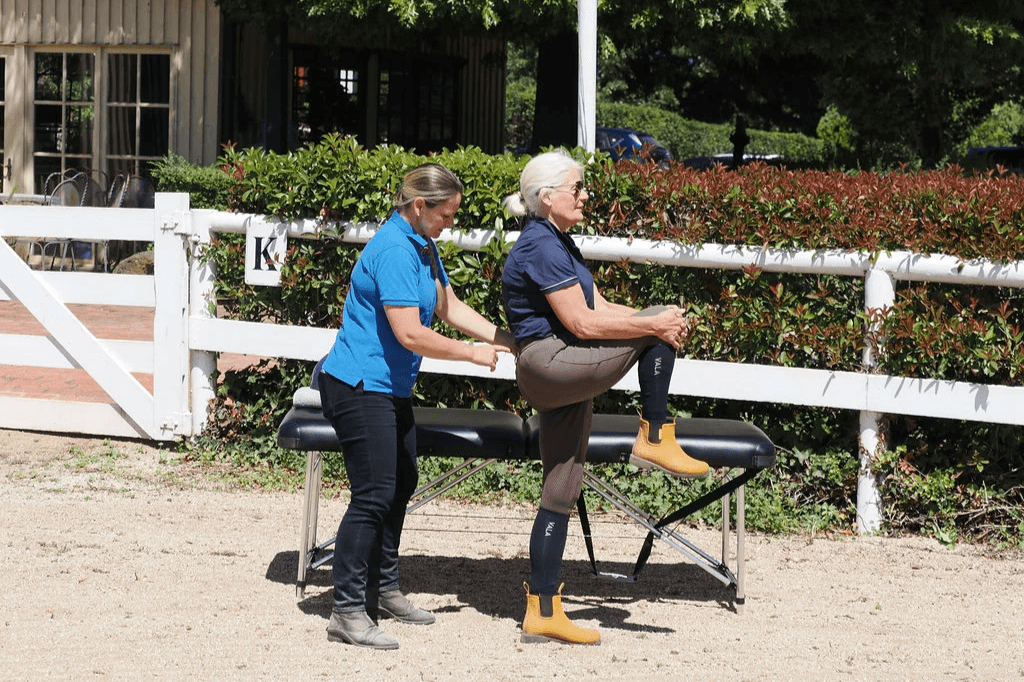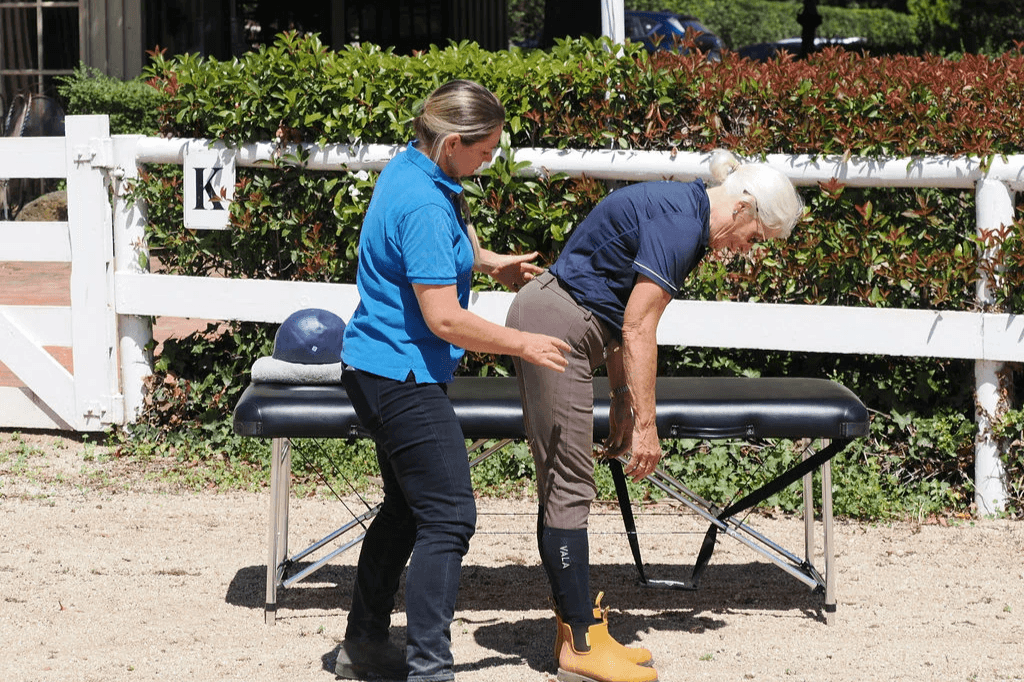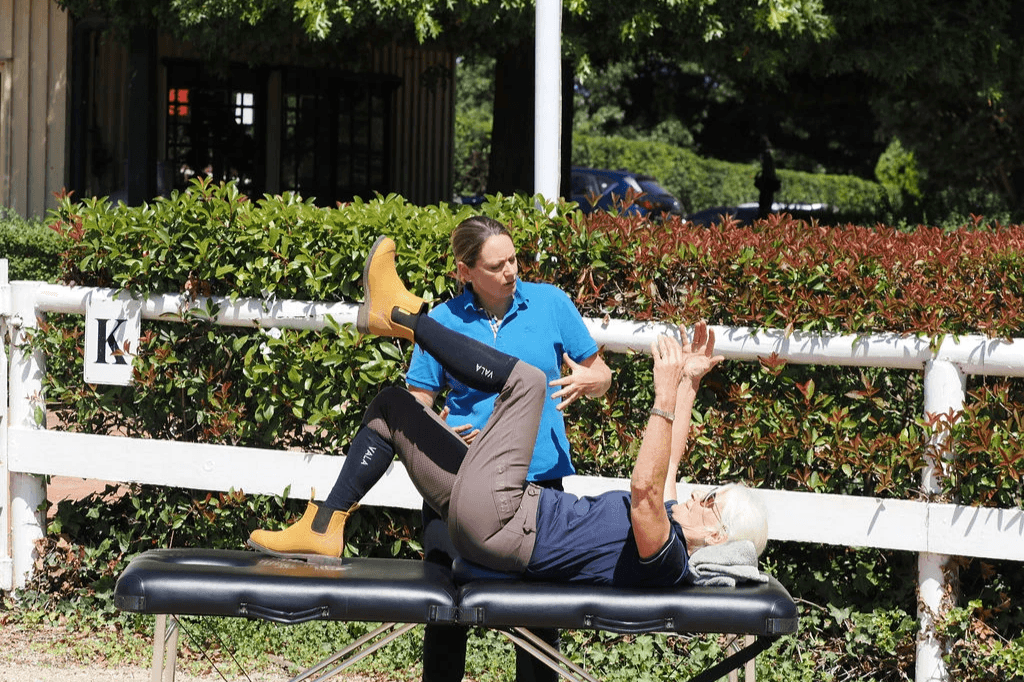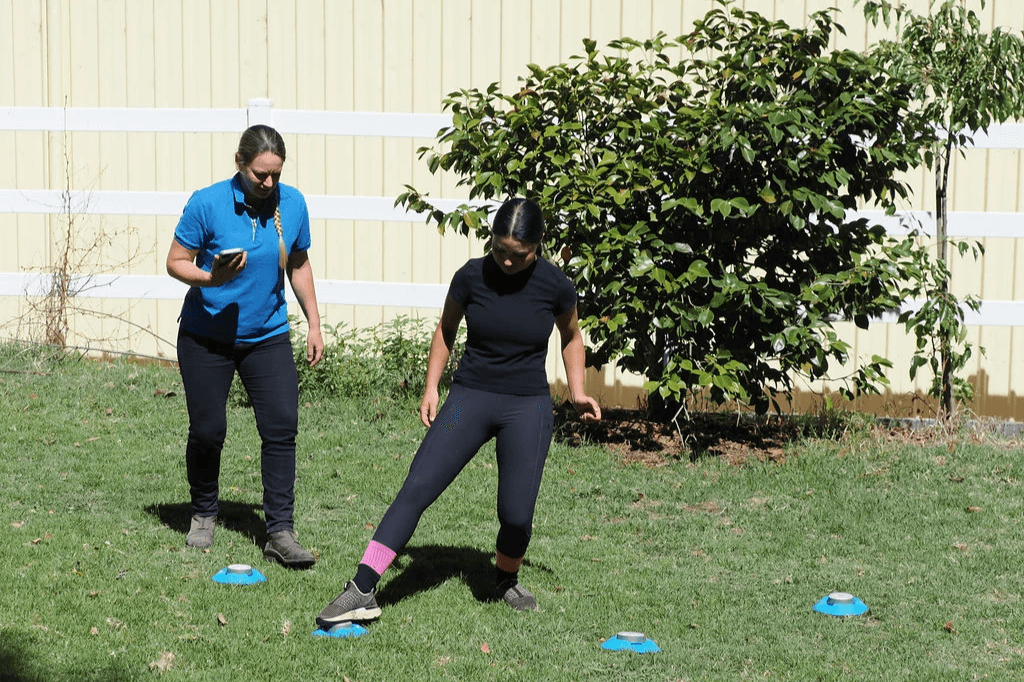


Physiotherapy Seat Assessment and Training for Harmony of Horse and Rider.
Helping You Ride with Confidence, Strength, and Skill—So Your Horse Gets the Rider They Deserve.
✅ Rider Seat Position Optimisation and Coaching
✅ Seat Corrections (asymmetry, leg position, hand position)
✅ Mechanical Horse Simulator Training
✅ Physiotherapy for Back, Neck and Joint Pain and Stiffness
✅ Pelvic Floor and Core Stability Training
Every Rider Can Be Better than They Are Today

"If you develop a straight, strong, supple and sensitive body, it makes it much easier to become a skilled rider.
Our partnership with a sensitive animal creates the need for our body to communicate in horse language, and that's a complex task for your brain and your body.
Riding skills and "feel" come from riding - you don't get them any other way! But you can do a lot "off-horse" to make the most of that time in the saddle, and get the best out of your lessons.
Unlike ball sports, like tennis or golf, riders can't practice our skills over and over on the horse. Many riders don't ride everyday, or more than one horse, to get the repeated practice that builds robust and automatic skills.
A fit, trained body is responsive and learns to think for itself - and you need those automatic skills in a dressage test or a jumping round if you're going to perform at your best.
Everything I teach other riders, I also do myself, as a living lab of life-long learning. I've been a physiotherapist for 20 years and a rider for nearly that long (on and off!).
The Better Rider Project is my way of sharing what I know as a professional to help horses and riders develop healthy, happy and harmonious partnerships, and if we win ribbons along the way, that's good too!"
To your riding success,
Lissanthea (and Billy 🐴)
Simulator Training for Riding Skill Development
Refine your riding position with focused practice, and build trust in your body through training on our horse simulator.
Our "Joker" simulator is the only rider-powered model of its kind in Australia—unlike mechanical simulators, it responds purely to your movement.
Uncover What's Holding You Back In the Saddle
Do you know how your body is limiting your riding potential or holding you back from making the most of your time with your horse?
A physiotherapy assessment can uncover the weak links in your body that may be affecting your performance. With expert guidance, you’ll gain a step-by-step plan to address these issues and create lasting improvements.
Through targeted testing against athletic benchmarks used in elite performance programs you’ll discover what you can do well and where it you might struggles in the saddle.
By understanding these areas, you can take action to improve your physical ability and, in turn, support your horse’s performance.
Riders who get assessed gain clear answers to the questions below and leave with a precise plan to elevate their physical performance.

Is your body STRAIGHT?
Straightness in a rider is the ability to maintain symmetry and alignment, ensuring even weight distribution and balanced movement that supports the horse’s natural straightness and balance.
It involves addressing challenges like handedness and habitual movement patterns while building strength and control to maintain a centred, adaptable position.
A straight rider provides the clarity and neutrality the horse needs to move symmetrically and develop its own balance and self-carriage. Achieving straightness is an ongoing process of body awareness, mindful practice, and dynamic adjustment, enabling both horse and rider to perform in harmony.
You must be able to position your body evenly on your seatbones, with equal weight into both legs and maintain an even contact on each rein without using excessive effort to hold yourself there.
You need to be able to turn your pelvis and your ribcage easily and symmetrically to both sides, so that you can ride comfortably and easily on both sides, on straight lines and circles.

Is your body SUPPLE?
Suppleness in a rider is the ability to move fluidly with the horse while maintaining balance, stability, and relaxation.
It requires enough length in your muscles and space around your joints, specifically your hips, pelvis, ankles and ribcage to create a comfortable position for both you and your horse.
Suppleness requires both movement AND control, and the absence of tension and gripping in the rider's body and mind.
A supple rider creates a harmonious partnership, encouraging the horse to move freely, engage its body correctly, and respond to subtle aids.
By developing suppleness, riders improve their connection with their horse, feel more balanced in their body and lay the foundation for better performance and mutual comfort.

Is your body STABLE?
Stability in a rider is the ability to control their body in relation to the horse and gravity, balancing strength with sensitivity to create a harmonious partnership.
Riding in partnership with a horse requires strength to absorb the horse's movement and the ability to evade gravity and stay in the saddle, even over obstacles or when your horse reacts to the environment around them.
It requires whole-body muscular control, a centred seat, and dynamic balance that adapts to the horse’s movement.
A stable rider provides the support and clarity the horse needs to develop its own balance and strength in self-carriage, without interference.
By building your awareness and strength in deep postural muscles, co-ordination and activation in your arms, legs and trunk, and power and reaction time where needed, riders can stay balanced, communicate clearly, and allow their horse to move freely and athletically beneath them.

Is your body SENSITIVE?
Sensitivity in a rider is the art of perceiving and responding to the horse with precision, timing, and deep awareness.
It involves developing feel, timing, and sensory skills that allow riders to connect with their horse’s movement, balance, and mood on a profound level.
Through mindfulness, body awareness, and exploration of perception, riders can refine their ability to communicate seamlessly with their horse, creating a harmonious partnership where even the subtlest signals are understood.
Sensitivity is both an ancient skill and an emerging frontier in rider training, opening doors to deeper connection and higher performance.
Contact Us
There's plenty of opportunities for individuals and groups to work with Lissanthea and Sven the Simulator.
Are you looking for ways to add something different to your pony club or adult riders rally days? We can visit your club for a talk or workshop, or for individual sessions for riders.
Use the form below to reach out with your questions.
Copyright 2025 "Better Rider Project"
The Better Rider Project rides on the traditional lands of the Wurundjeri People of the Kulin nation, and recognise their traditional custodianship of this land.





